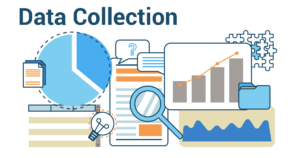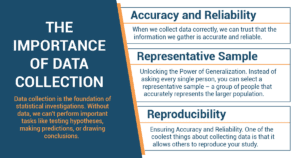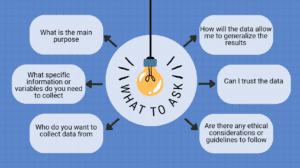Close your eyes for a moment and envision your typical morning routine. As you awaken, what’s the first thing you do? Do you reach for your smartphone and scroll through your social media feeds? Or perhaps you stumble into the kitchen to make yourself a cup of steaming coffee? Whatever it may be, take a moment to ponder the sheer amount of information you encounter and absorb during those precious first moments of the day.

Now, imagine each of these actions and encounters as a tiny droplet of data floating around you, waiting to be collected. Every social media post you like, every sip of coffee you relish, and every text message you send—all contributing to a vast ocean of data points. Surprised? Well, my friend, the truth is that you are swimming in a sea of data every single day, often unknowingly leaving ripples behind with every step you take.
But why is this important, you might ask? How does your morning routine relate to understanding the significance of data collection in statistical studies? The answer lies in a simple yet powerful realization—we live in an age where data has become the lifeblood of progress, innovation, and decision-making.
In this article, we’ll dive into the exciting world of data collection and discover why it plays a crucial role in statistical studies.
What is Data Collection?
Data collection is like gathering puzzle pieces that help us solve a big mystery. It’s the process of collecting the information we need to answer our burning questions. Just imagine you’re trying to find out if eating breakfast affects your performance in school. To do that, you need to collect data – the details and facts that will give you the clues you’re looking for.

Data collection is vital because it’s the foundation of statistical investigations. Without data, we can’t perform important tasks like testing hypotheses, making predictions, or drawing conclusions. Have you ever tried to solve a math problem without any numbers? It’s nearly impossible, right? Well, the same principle applies to statistical investigations. Here are some considerations when thinking about data:
- Accuracy and reliability
When we collect data correctly, we can trust that the information we gather is accurate and reliable, directly relating to its validity. Validity refers to the extent to which the data accurately represents what is being studied. Think of it as building a sturdy bridge – if the foundation is strong, we can be confident that our findings are based on solid information. So, collecting data in the right way is crucial for producing meaningful and trustworthy results.
- Representative sample: Unlocking the power of generalization
Imagine you want to know how much time high school students spend on social media each day. Instead of asking every single student, you can select a representative sample– a group of students that accurately represents the larger high school population. By collecting data from this sample, you can draw conclusions about the entire student population. It’s like taking a small bite of a pizza slice and knowing how the whole pizza tastes! - Reproducibility: Ensuring accuracy and reliability
One of the coolest things about collecting data is that it allows others to reproduce your study. If you collect your data in a clear and organized way, other people can follow your steps and see if they get the same results. It’s like passing on a recipe to a friend – they can make the same dish and see if it turns out just as delicious. This process, known as reproducibility, ensures that your findings are accurate and reliable.
Questions to Ask During Data Collection
